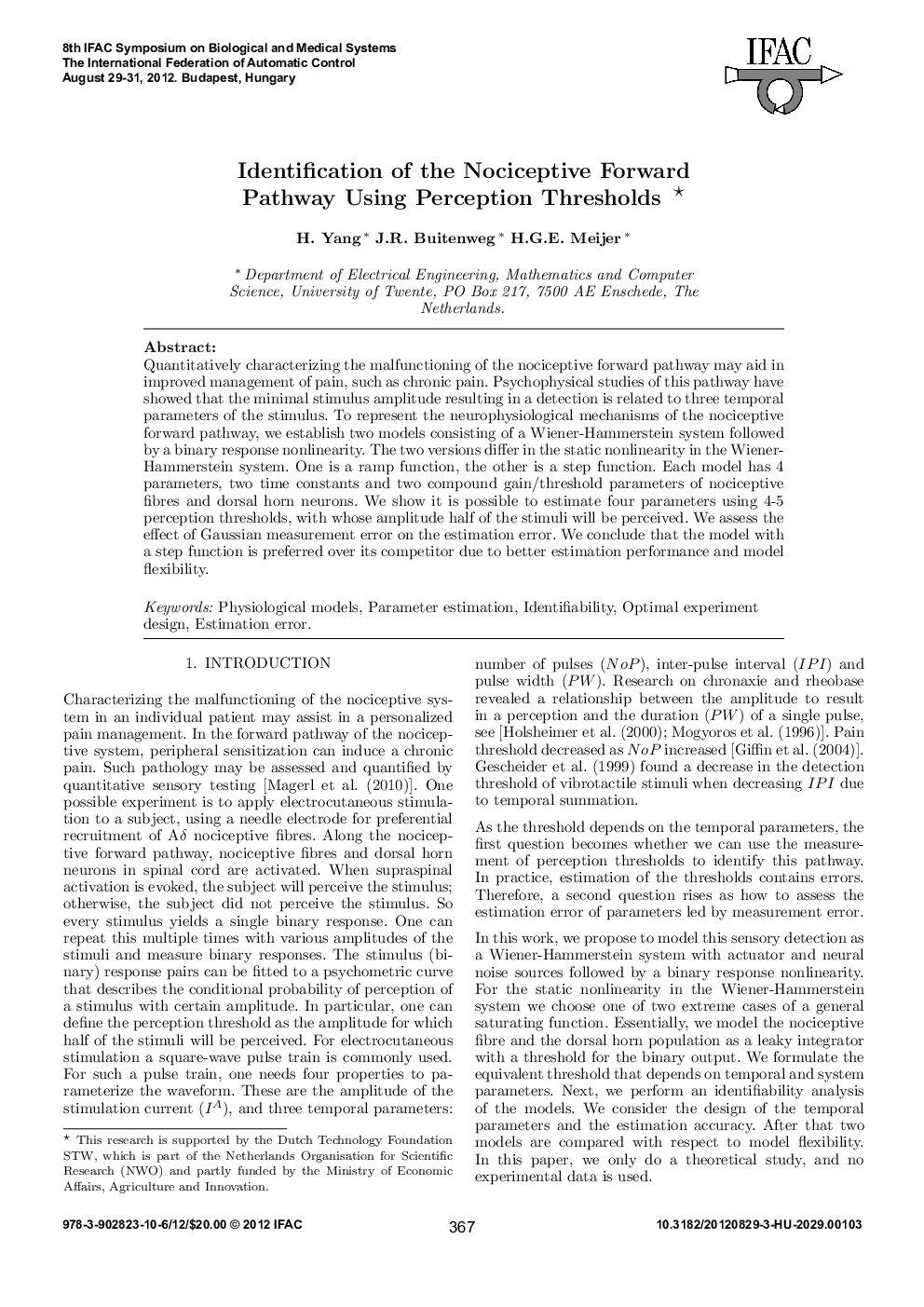| Article ID | Journal | Published Year | Pages | File Type |
|---|---|---|---|---|
| 718298 | IFAC Proceedings Volumes | 2012 | 6 Pages |
Quantitatively characterizing the malfunctioning of the nociceptive forward pathway may aid in improved management of pain, such as chronic pain. Psychophysical studies of this pathway have showed that the minimal stimulus amplitude resulting in a detection is related to three temporal parameters of the stimulus. To represent the neurophysiological mechanisms of the nociceptive forward pathway, we establish two models consisting of a Wiener-Hammerstein system followed by a binary response nonlinearity. The two versions differ in the static nonlinearity in the Wiener-Hammerstein system. One is a ramp function, the other is a step function. Each model has 4 parameters, two time constants and two compound gain/threshold parameters of nociceptive fibres and dorsal horn neurons. We show it is possible to estimate four parameters using 4-5 perception thresholds, with whose amplitude half of the stimuli will be perceived. We assess the effect of Gaussian measurement error on the estimation error. We conclude that the model with a step function is preferred over its competitor due to better estimation performance and model flexibility.
